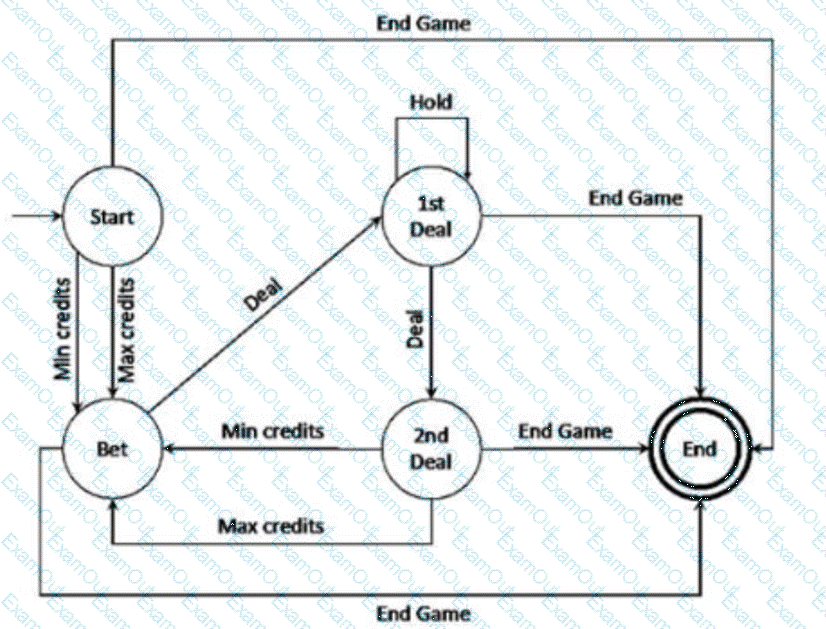Which of the following statements about white-box test techniques is true?
A typical objective of testing is to ensure that:
An application is subjected to a constant load for an extended period of time as part of a performance test While running this test, the response time of the application steadily slows down, which results in a requirement not being met This slowdown is caused by a memory leak where the application code does not properly release some of the dynamically allocated memory when it is no longer needed. Which of the following statements is TRUE?
Which of the following statements best describes the difference between product risk and project risk in software testing?
Consider the following simplified version of a state transition diagram that specifies the behavior of a video poker game:

What Is the minimum number of test cases needed to cover every unique sequence of up to 3 states/2 transitions starting In the "Start" state and ending In the "End" state?
Test automation allows you to:
Which of the following work products cannot be examined by static analysis?
Scenario 1 “Happy Tomatoes” (used for questions 20-22):
An intelligent application for agricultural use incorporates temperature sensors located at different points of an enclosure. The sensors measure and record the temperature at regular intervals and extract the statistical values for these measurements. These values include the average daily temperature.
A new variety of tomatoes is currently being grown and the“World Organization for Happy Tomatoes”has established temperature ranges related to vegetative development.
When the system establishes that the average temperature is within a specific range, it emits a value that will be used to monitor and control the crop.

Using theequivalence partitioningtechnique, identify the set of input values that provides the HIGHEST coverage.
Which of the following statements about static testing and dynamic testing is TRUE?
Which of the following s the most correct statement about state testing techniques?

